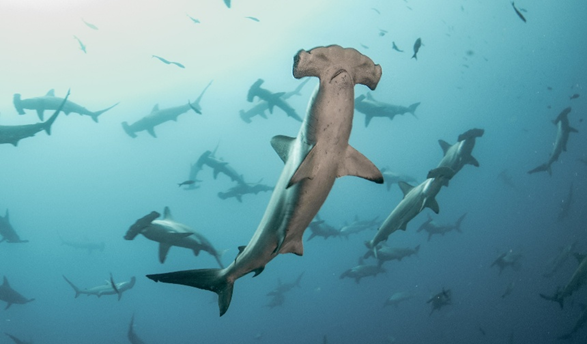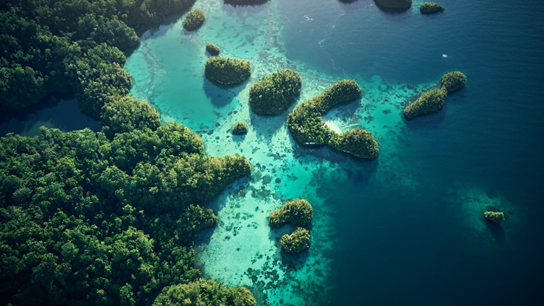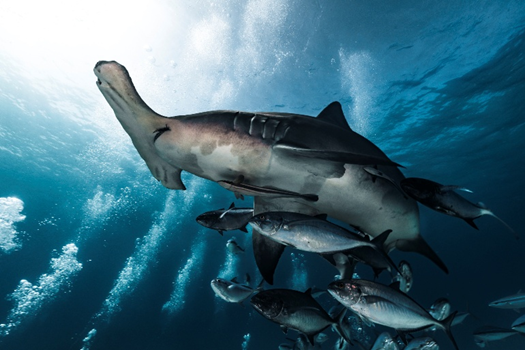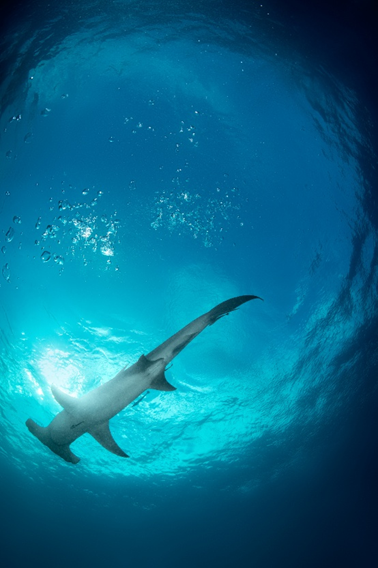BIODIVERSITY PROTECTION SERIES: HAMMERHEAD SHARKS OF INDONESIA
- PT CLS Argos Indonesia
- Jul 28
- 3 min read

Hammerhead sharks are some of the ocean’s most fascinating creatures. With their unique head shape and powerful presence, they are not only easy to recognize but also play a key role in keeping marine ecosystems healthy. In Indonesia—one of the most biodiverse marine regions in the world—several species of hammerhead sharks can be found, including the scalloped hammerhead (Sphyrna lewini), which is now classified as Critically Endangered by the International Union for Conservation of Nature (IUCN).
Sadly, hammerhead sharks are in trouble. Their numbers are decreasing due to overfishing, loss of habitat, and the illegal shark fin trade. To help protect them, scientists are using modern satellite tracking technology to better understand their movements and behavior—and to guide conservation efforts.
For more than 20 years, Argos Services, powered by CLS Indonesia, has supported marine protection by offering reliable satellite tracking solutions. These tools are now being used to follow hammerhead sharks in Indonesian waters, helping researchers discover important details about their lives that were once impossible to see.
Indonesia’s Hammerhead Sharks: Why They Matter and How Argos Services Helps

Indonesia is considered a key habitat for scalloped hammerhead sharks, especially in areas like Raja Ampat, Lombok, Komodo, and the Banda Sea. These sharks help keep marine life in balance by controlling fish populations and supporting the health of coral reefs.
But today, they face serious threats:
Overfishing and accidental catch in both large-scale and small-scale fishing
Illegal shark finning driven by global demand
Habitat destruction from reef damage and coastal development
Not enough data on their migration routes and key habitats
To protect hammerheads, we first need to understand where they go, how they behave, and what puts them in danger. Satellite tracking provides exactly this kind of critical information.
Tracking Hammerheads: From Mistery to Conservation Action
Hammerhead sharks travel far and wide, often crossing oceans and even national borders. By using satellite tracking devices, thanks to Argos Services, scientists can follow these sharks almost in real time and gain insights into how they live.
By attaching satellite tags to hammerheads, researchers can learn about:

Where they migrate and when
The depths and temperatures they prefer
Where they feed, rest, and breed
How they react to environmental stress
This knowledge helps guide smarter decisions about where to place Marine Protected Areas (MPAs) and how to better enforce fishing rules to prevent illegal activity.
Every Shark Is Unique: The Importance of The Right Tracking Tag
Hammerhead sharks have a special body shape, with a wide head and tall dorsal fin. They are always on the move and swim fast, so the satellite tags used to track them must be light, streamlined, and safe for the animal.
Argos Services works with a wide range of tag providers to offer solutions that suit different needs. Whether the goal is to follow sharks for a few weeks or many months, Argos delivers dependable data, even from the most remote parts of the ocean. To explore tags, you can visit our recommended manufacturers page for suitable tags.
Tracking Projects in Indonesia: Learning More Every Day
In recent years, several shark tracking projects have been launched in Indonesia. For

example:
WWF Indonesia has tagged scalloped hammerheads to identify important habitats in the Banda Sea and nearby regions.
The Elasmobranch Institute Indonesia is tracking hammerhead movements to learn more about their behavior and discover places where they gather in large numbers.
These efforts are building a clearer picture of hammerhead life in Indonesia and helping scientists and policymakers work together to create better protection plans.
What We've Discovered and What We Still Need to Know
Thanks to satellite tracking, we now know much more about hammerhead sharks, such as:
They gather near coral reefs during full moons
Young sharks travel across open ocean areas, putting them at risk from fishing
Some sharks migrate between countries, which means regional cooperation is key
But many questions remain. How do hammerheads respond to climate change? Where are their nursery grounds? What underwater features like seamounts or ridges influence their movement?
The good news is that tracking technology is improving. With the launch of the new Kinéis satellite constellation, scientists will soon be able to track animals more frequently and with greater precision, making conservation efforts even more effective.
Hammerhead sharks are essential to ocean health. Protecting them means keeping marine ecosystems in balance for the benefit of both nature and people.
If you’re a scientist, marine park manager, or part of a conservation NGO, Argos Services and CLS Indonesia offer the tools and support you need. From choosing the right tracking tag to analyzing shark movement data, we are here to help you protect Indonesia’s incredible marine biodiversity.
Contact us to learn more about shark tracking and join us in securing a future for hammerhead sharks in Indonesia and beyond.





